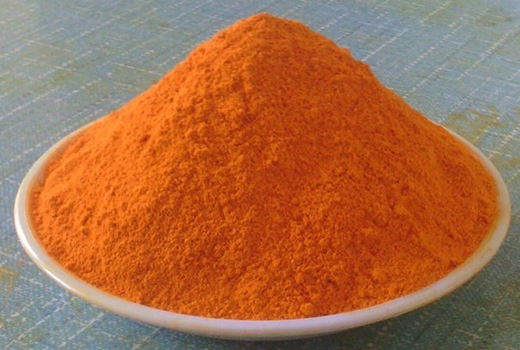Decoding the Gold of Life: a review by Curcumin
Introduction
Phytochemicals are naturally occurring substances found in plants. There has been considerable public and scientific interest in the use of phytochemicals derived from dietary components to combat human diseases, especially the two commonest killers in the developed world, cardiovascular disease and cancer. Curcumin, as a natural product, has gained attention from scientists worldwide for its biological activities.
The dried ground rhizome of the perennial herb Curcuma longa Linn., called turmeric in English, haldi in Hindi and ukon in Japanese, has been used in Asian medicine since the second millenium BC. Its utility is referred to in the ancient Hindu scripture, the Ayurveda. In addition to its aromatic, stimulant and colouring properties in the diet, turmeric is mixed with other natural compounds such as slaked lime and has been used topically as a treatment for wounds.
This article will explore the properties and medical effects of curcumin based on its structure.

Chemical structure and physicochemical properties of Curcumin
Curcumin is a bis-a,b-unsaturated b-diketone. As such, curcumin exists in equilibrium with its enol tautomer. The bis-keto form predominates in acidic and neutral aqueous solutions and in the cell membrane. At pH 3–7, curcumin acts as an extraordinarily potent H-atom donor. This is because, in the keto form of curcumin, the heptadienone linkage between the two methoxyphenol rings contains a highly activated carbon atom, and the C–H carbon bonds on this carbon are very weak due to delocalisation of the unpaired electron on the adjacent oxygens. In contrast, above pH 8, the enolate form of the heptadienone chain predominates, and curcumin acts mainly as an electron donor, a mechanism more typical for the scavenging activity of phenolic antioxidants. Curcumin is relatively insoluble in water, but dissolves in acetone, dimethylsulphoxide and ethanol.1
Pharmacological effects
Anti-inflammatory effect2
The inflammatory cascade plays an important role in the development of chronic illnesses such as autoimmune, cardiovascular, endocrine, neurodegenerative and neoplastic diseases. Curcumin is able to decrease inflammation by interacting with many inflammatory processes.
Curcumin also inhibits inflammatory cytokines, such as interleukins (ILs), chemokines, as well as inflammatory enzymes, such as cycloxygenase-2 (COX-2), inducible nitric oxide synthase (iNOS) and others molecules as cyclinD1. This natural anti-inflammatory agent is able to inhibit MAPK and NF-κB pathways in TNF-α-treated HaCaT cells and, therefore, IL-1β and IL-6 expression. In others studies in BV2 microglia cell stimulated with lipopolysaccharide (LPS), curcumin also inhibited IL6 and TNF-α. Due to all its anti-inflammatory properties, curcumin is able to improve different chronic diseases.
Anti-cancer effect3
Curcumin exerts its immunomodulatory ability by interacting with several immune mediators, hence its anticancer property.
Nuclear factor κB is a pro-inflammatory transcription factor that modulates the expression of different proteins—such as cytokines interleukin (IL)-1, IL-2, and interferon-γ (IFNγ)—involved in multiple cell signaling pathways associated with cancer progression and inflammation. Phosphorylated NF-κB binds DNA and starts the transcription of oncogenes which block apoptosis and initiates cellular proliferation and angiogenesis. Curcumin suppress NF-κB activity by inhibiting the phosphorylation by I kappa B kinase (IκB) and impeding nuclear translocation of the NF-κB p65 subunit.
Similarly, the transcriptional factor AP-1 (Activator Protein-1), known to be related to anti-apoptotic, mitogenic, and pro-angiogenic genes, is downregulated by curcumin. Indeed, curcumin is reported to exert anticancer properties in different in vitro models through the inhibition of AP-1 and NF-κB factors.
One member of the STAT family, STAT3, is described as a common target for several signaling pathways regulating oncogenes, as well as modulating the transduction of pro-inflammatory cytokines and growth factors. This factor contributes to the growth and survival of the cell, increasing the expression of anti-apoptotic proteins such as Bcl-2 and Bcl-xL, thereby blocking apoptosis. Several factors, such as IL-6, as well as EGFR, PDGF, leukemia inhibitory factor (LIF), oncostatin M, and the ciliary neurotrophic factor (CNTF) family of cytokines, are reported to be STAT3 activators. Moreover, STAT3 is reported to be a molecular target of curcumin in several tumors, both directly and indirectly by inhibition of IL-6.
References:
[1] R.A. SHARMA W P S A J Gescher. Curcumin: The story so far[J]. European Journal of Cancer, 2005, 41 13: 1831-2032. DOI:10.1016/j.ejca.2005.05.009.[2] M. PULIDO-MORAN. Curcumin and Health[J]. Molecules, 2016, 72-73 1: 20-25. DOI:10.3390/molecules21030264.
[3] A. GIORDANO G T. Curcumin and Cancer[J]. Nutrients, 2019. DOI:10.3390/nu11102376.
You may like
Related articles And Qustion
Lastest Price from Curcumin manufacturers

US $1200.00-1100.00/ton2025-10-14
- CAS:
- 458-37-7
- Min. Order:
- 1ton
- Purity:
- 99%
- Supply Ability:
- 1000T/M

US $1200.00-1100.00/ton2025-09-25
- CAS:
- 458-37-7
- Min. Order:
- 1ton
- Purity:
- 99%
- Supply Ability:
- 1000T/M





